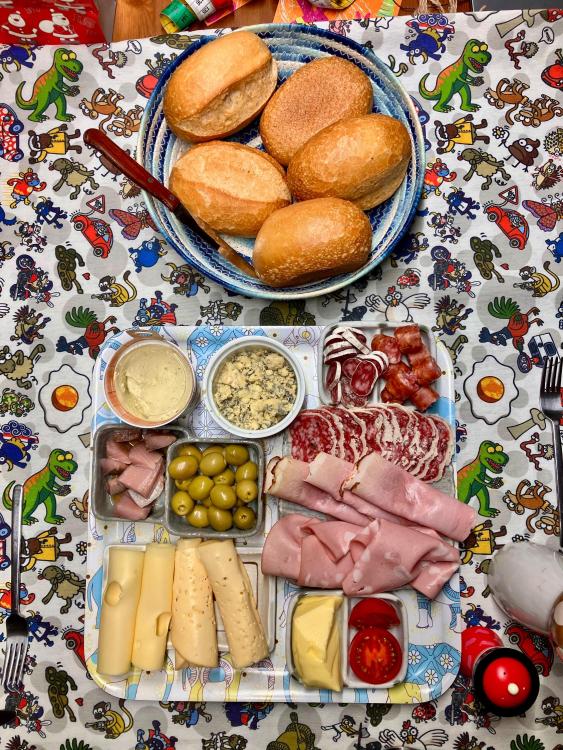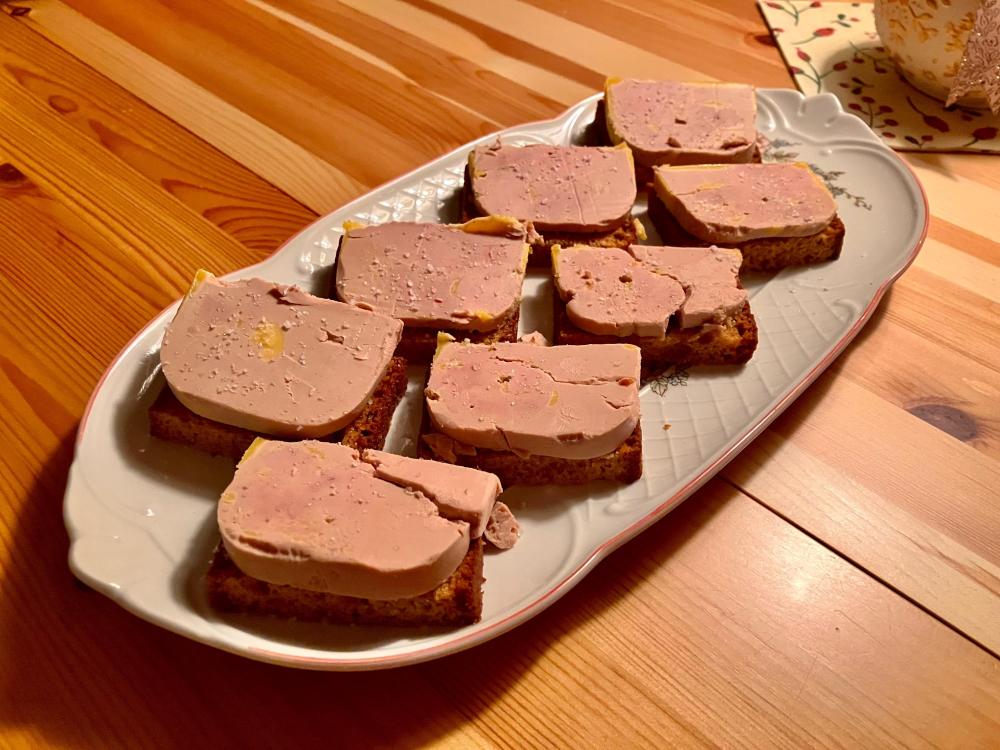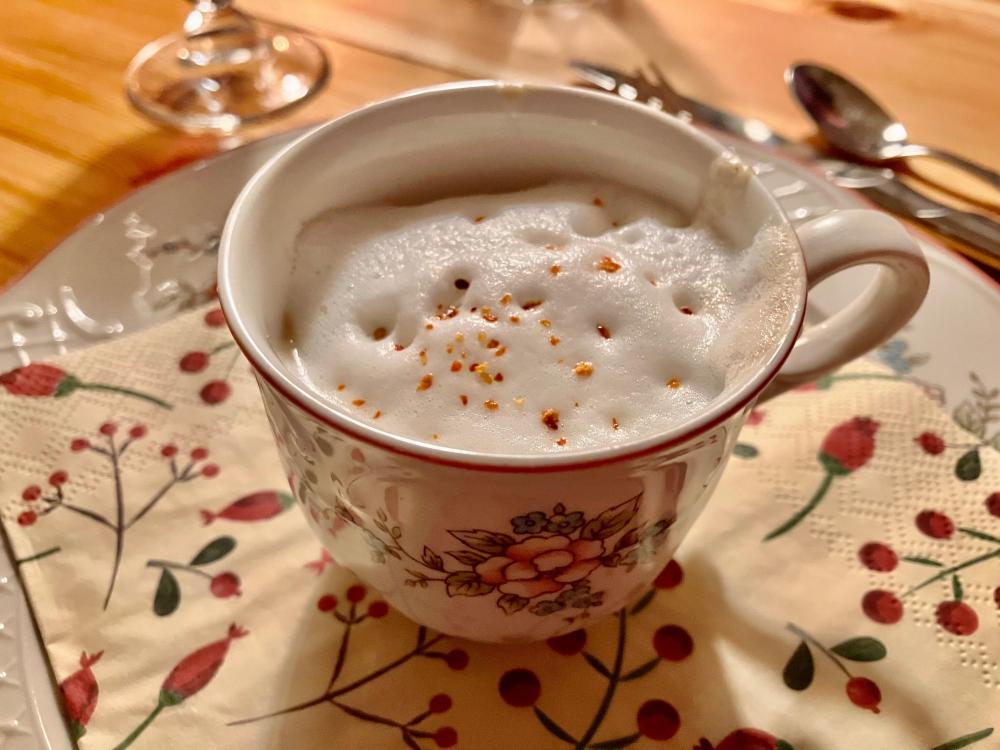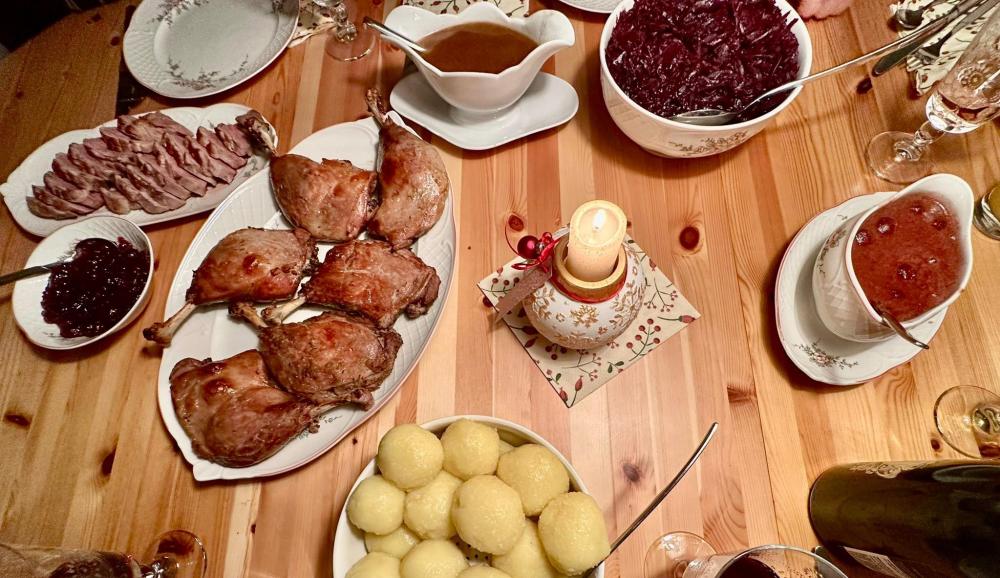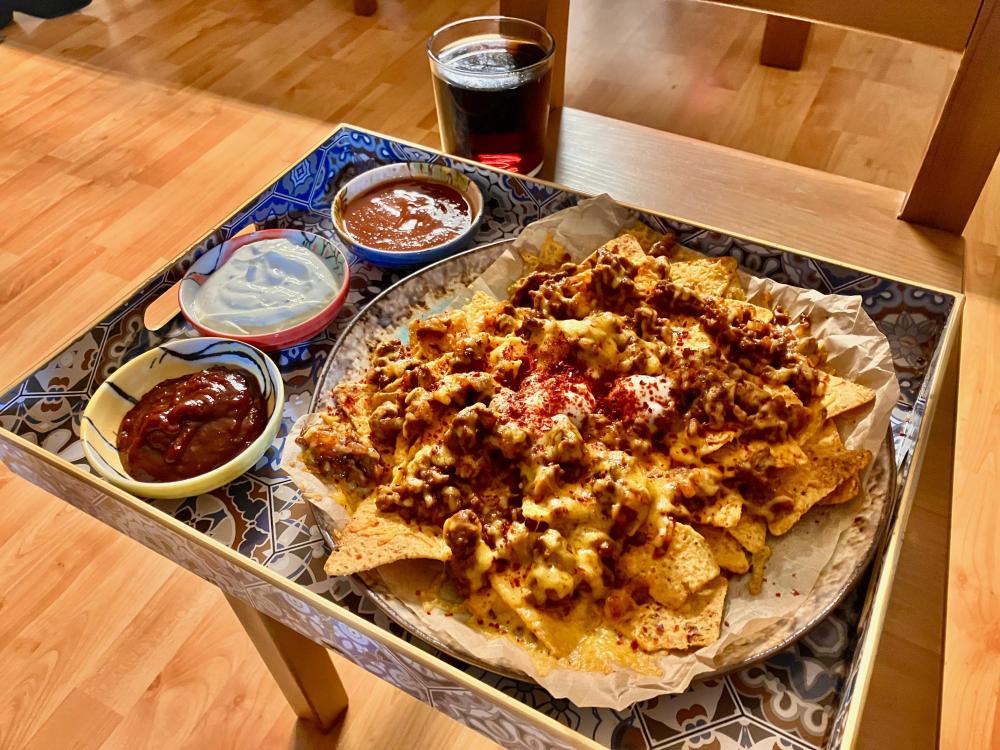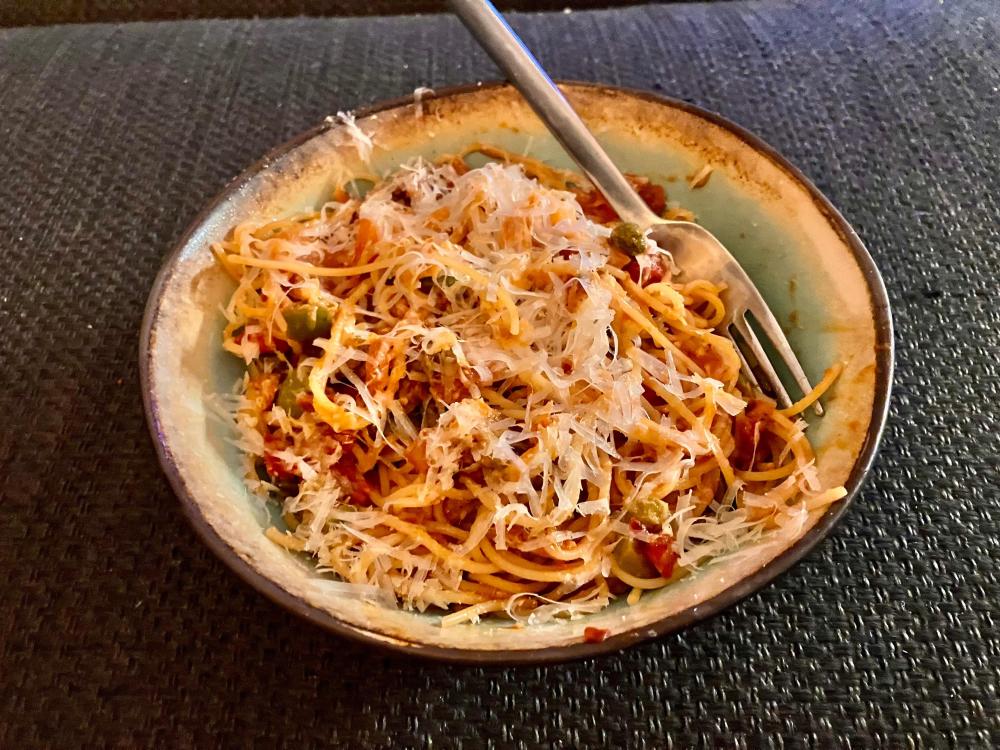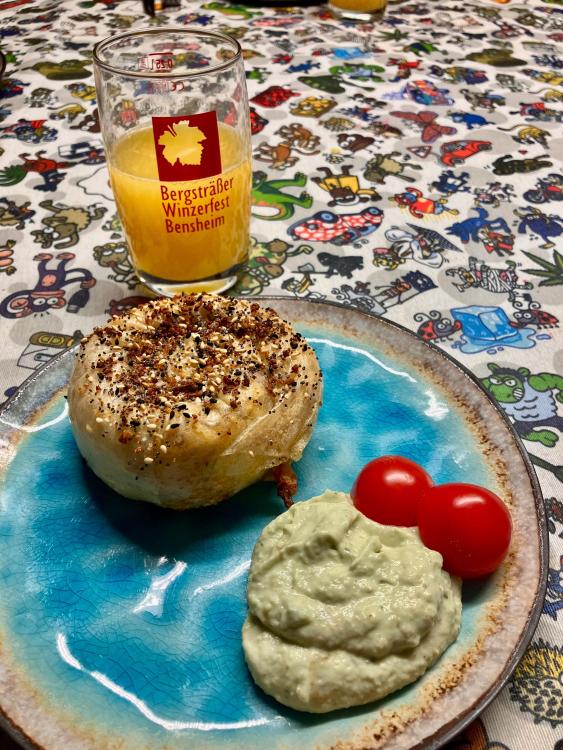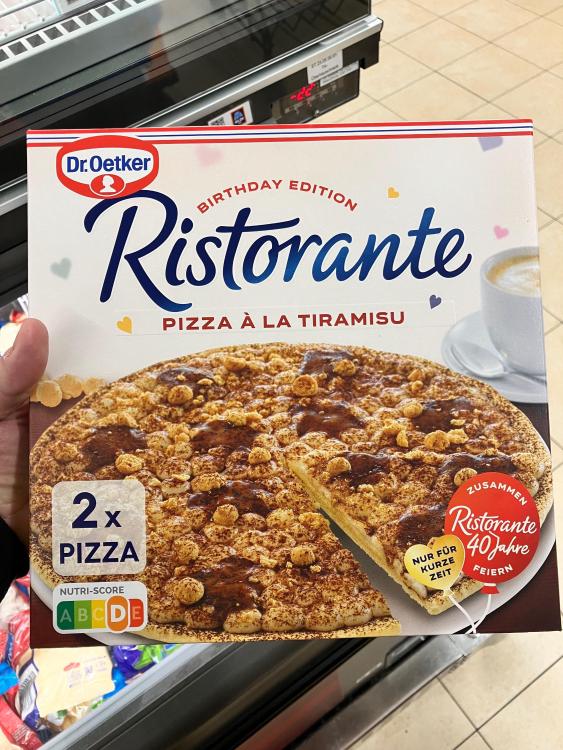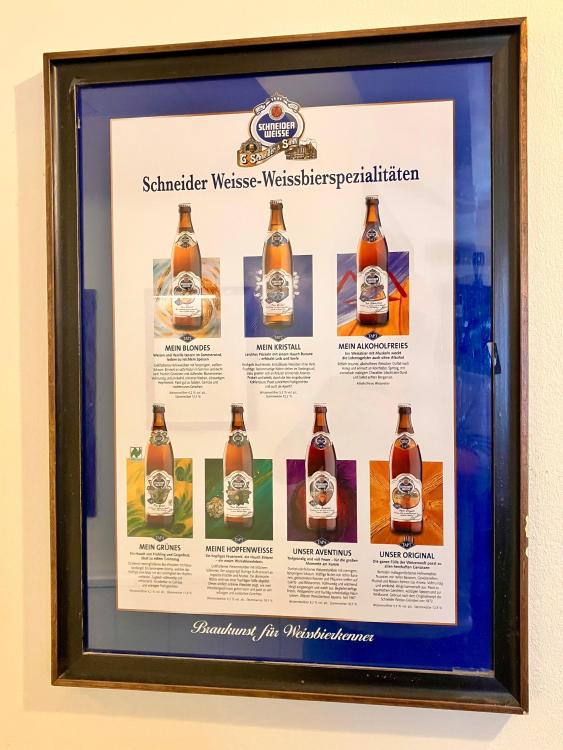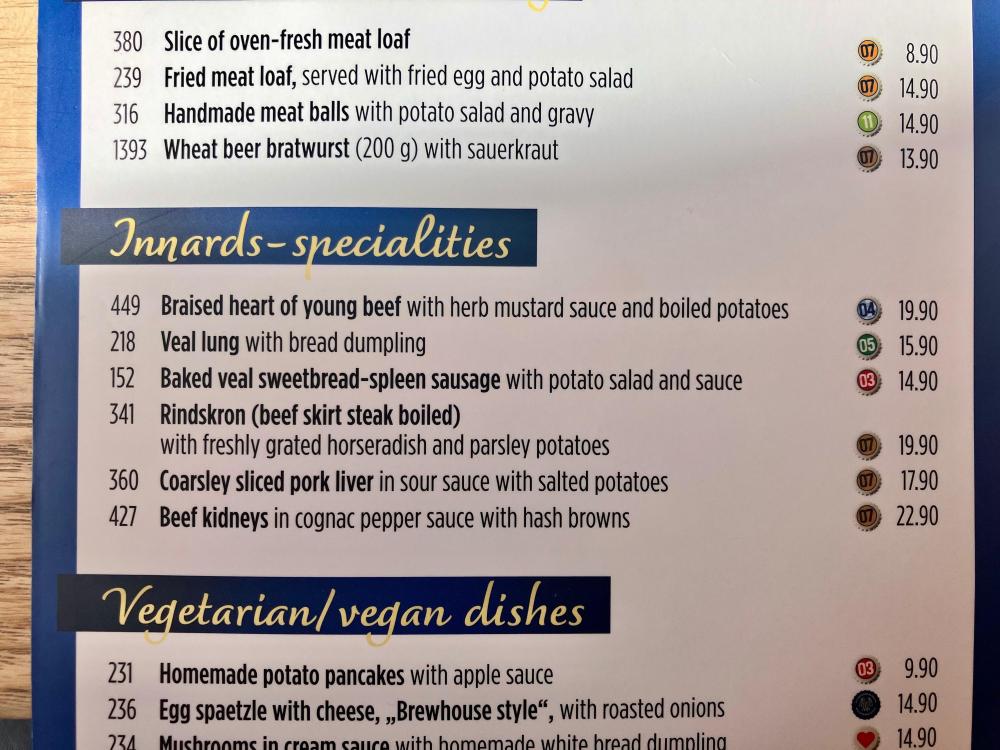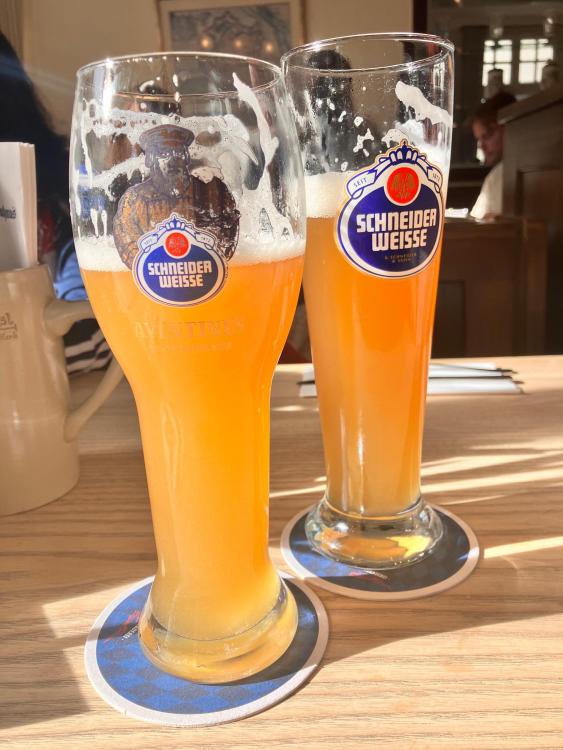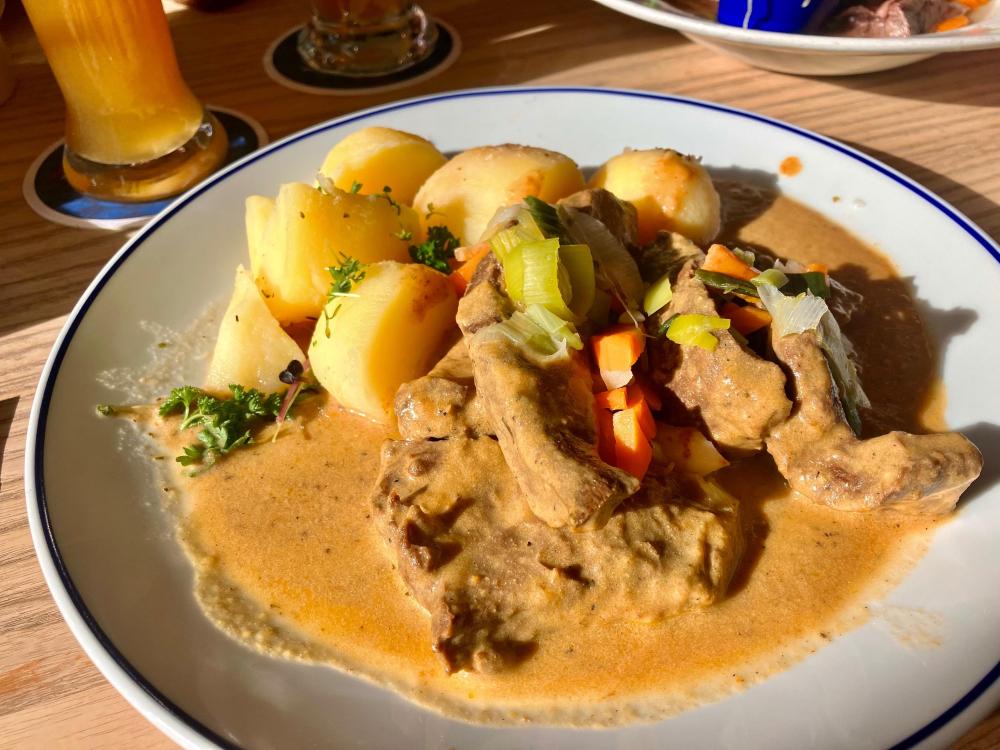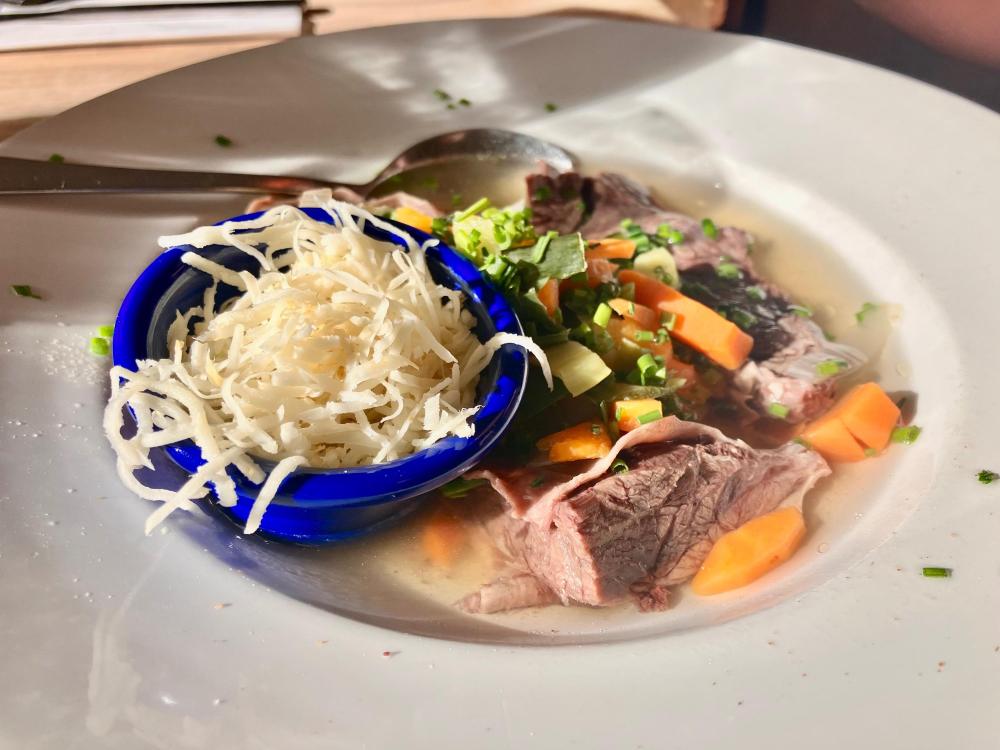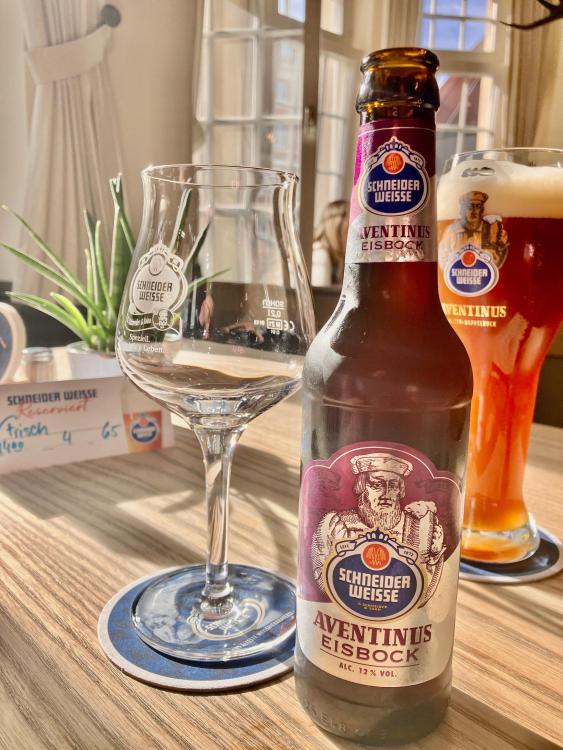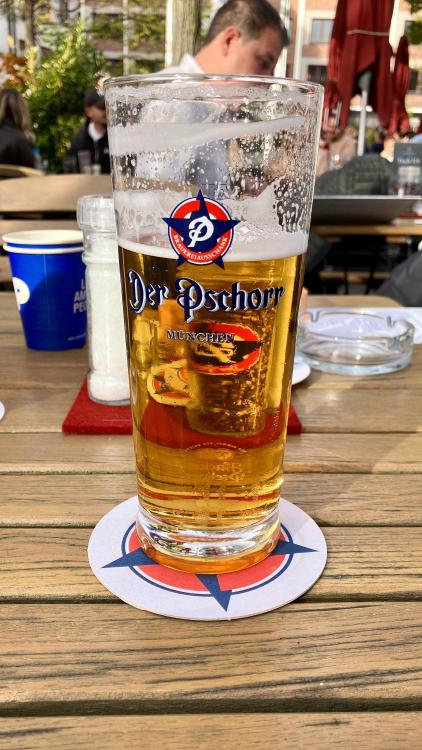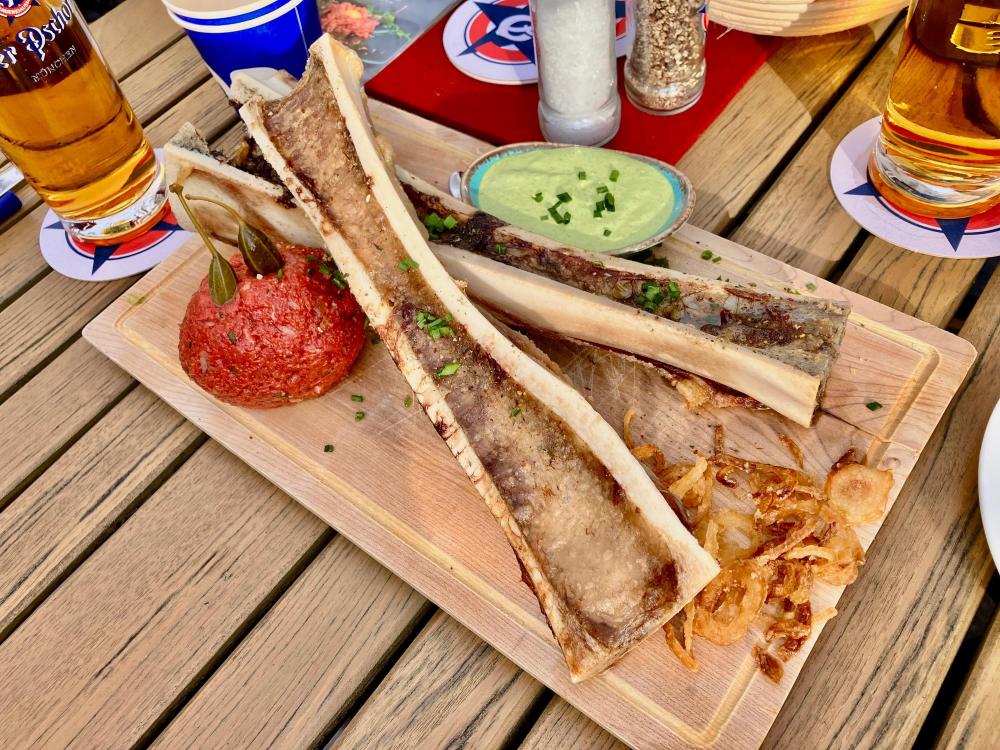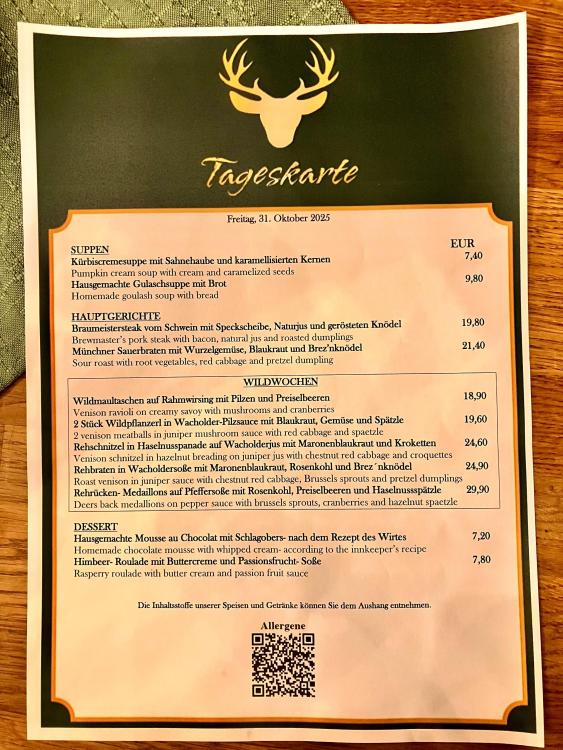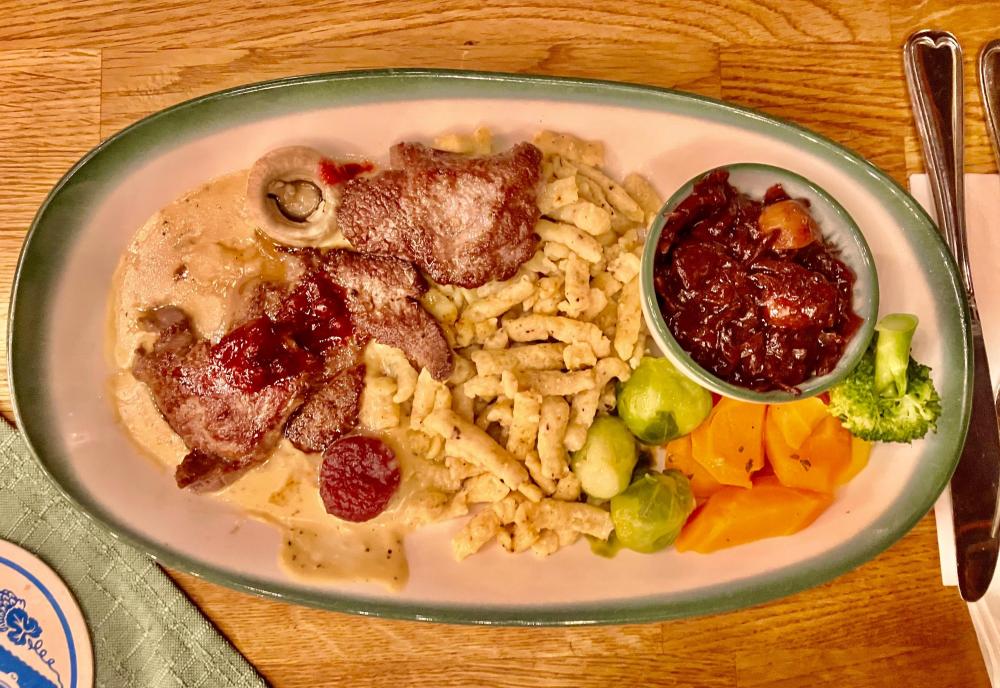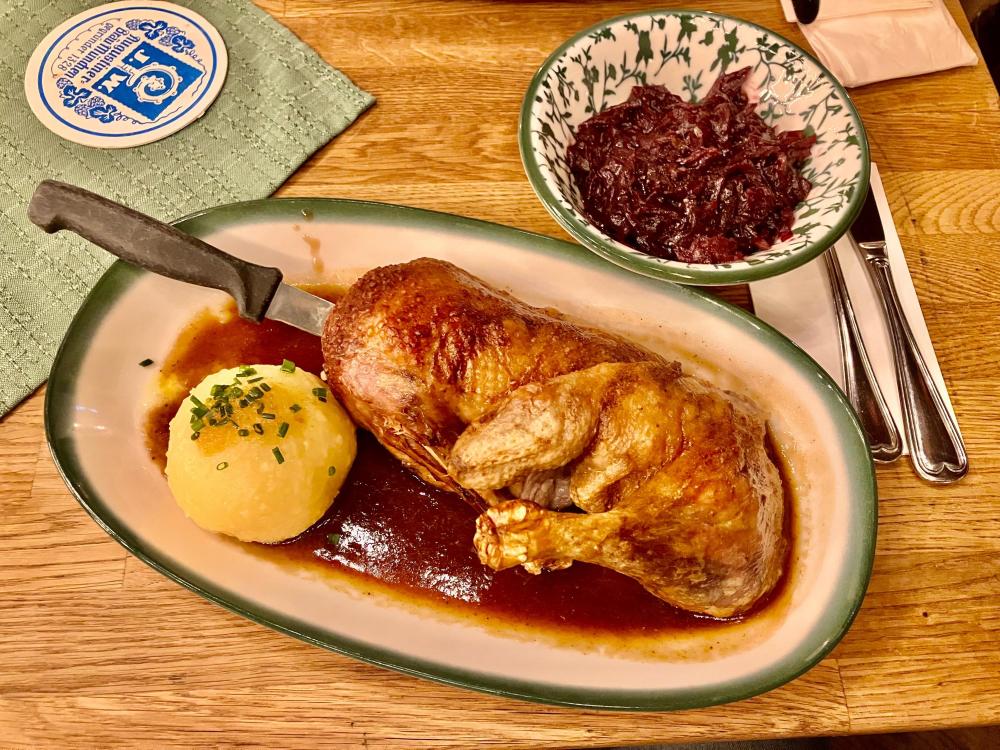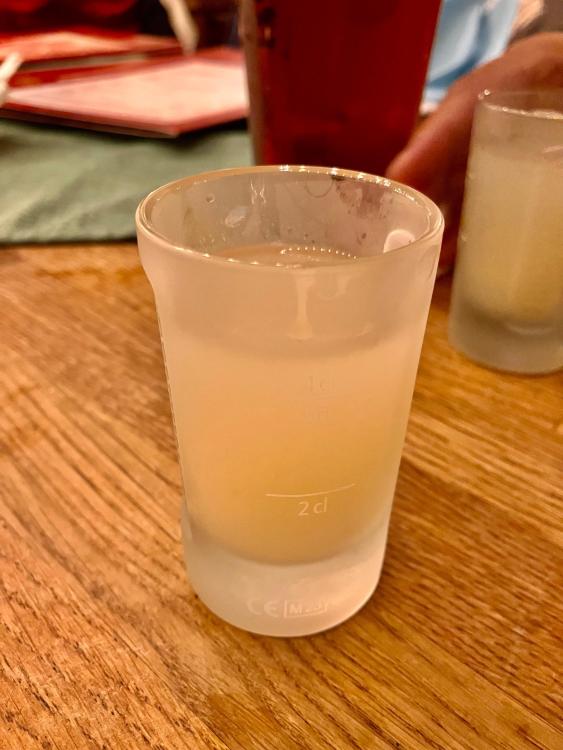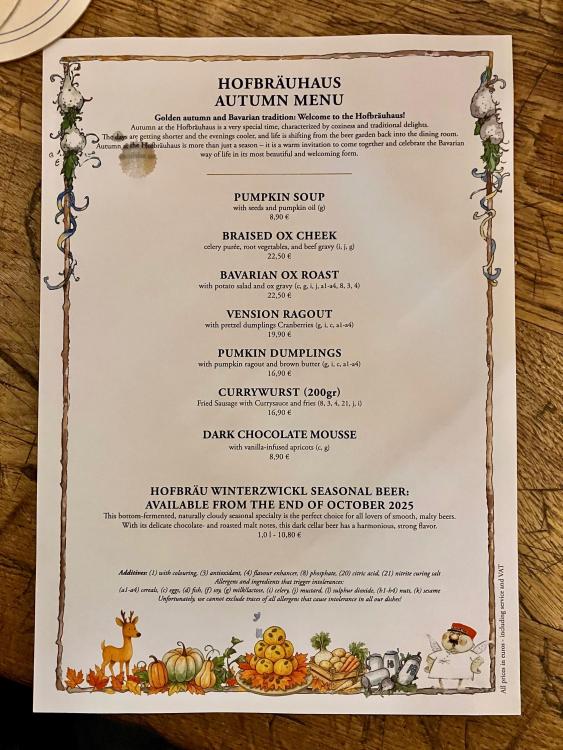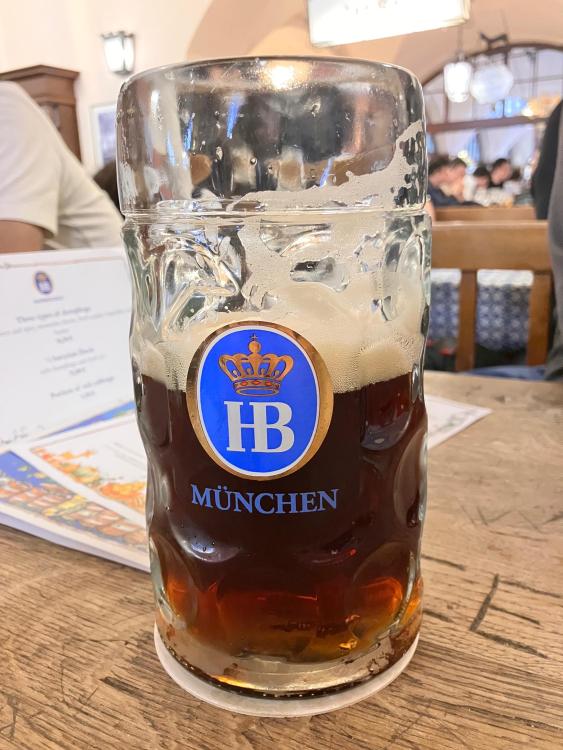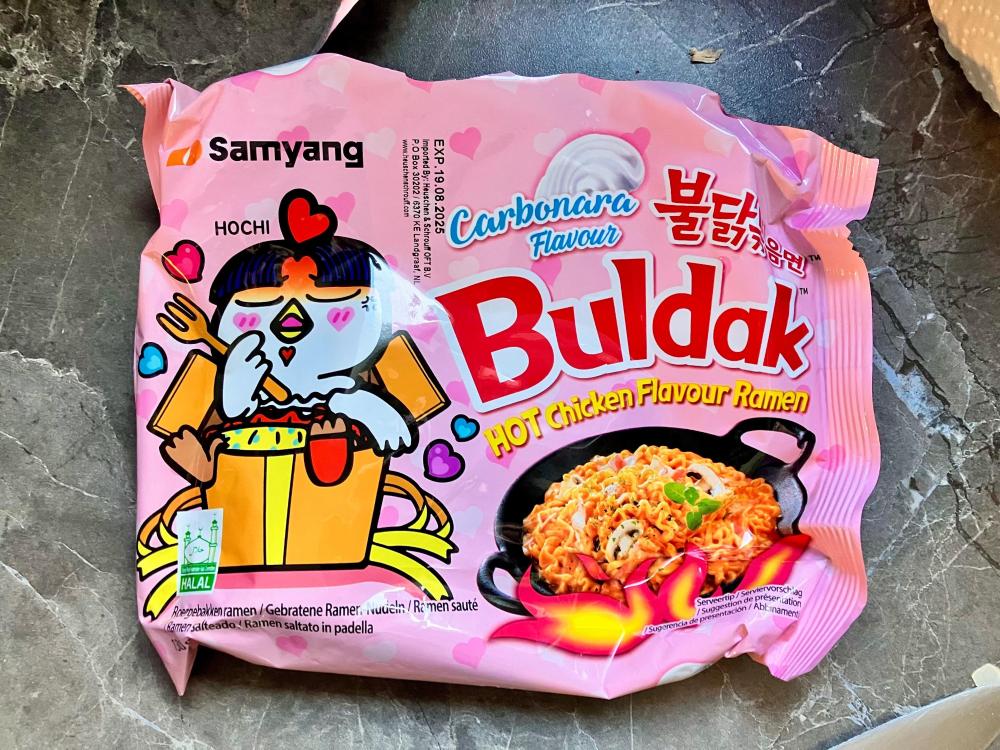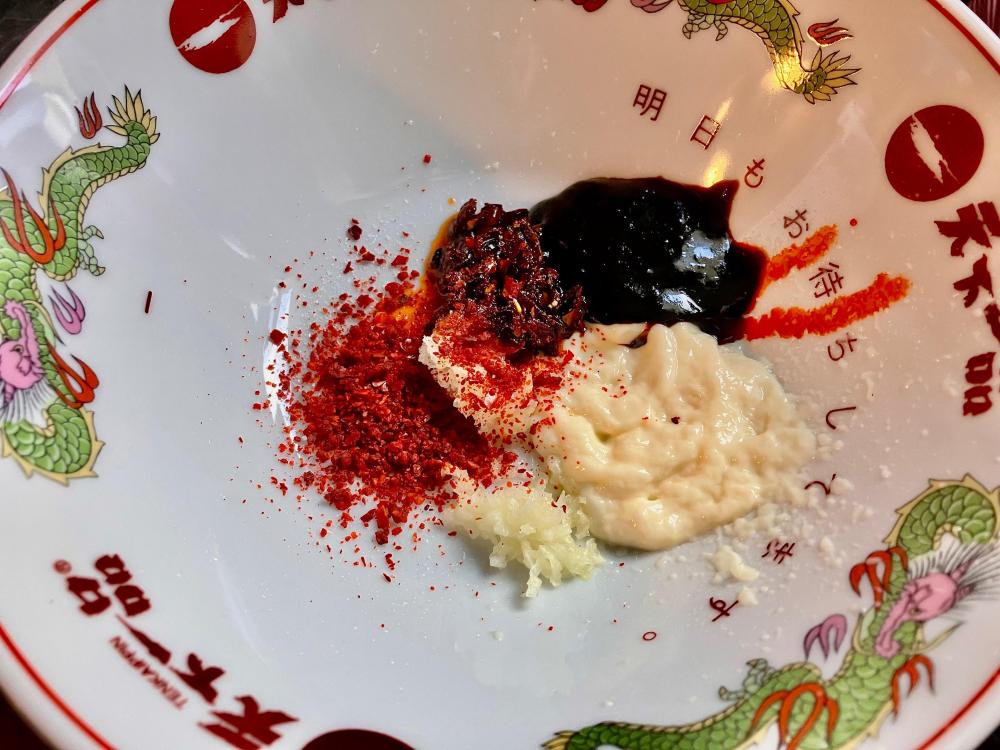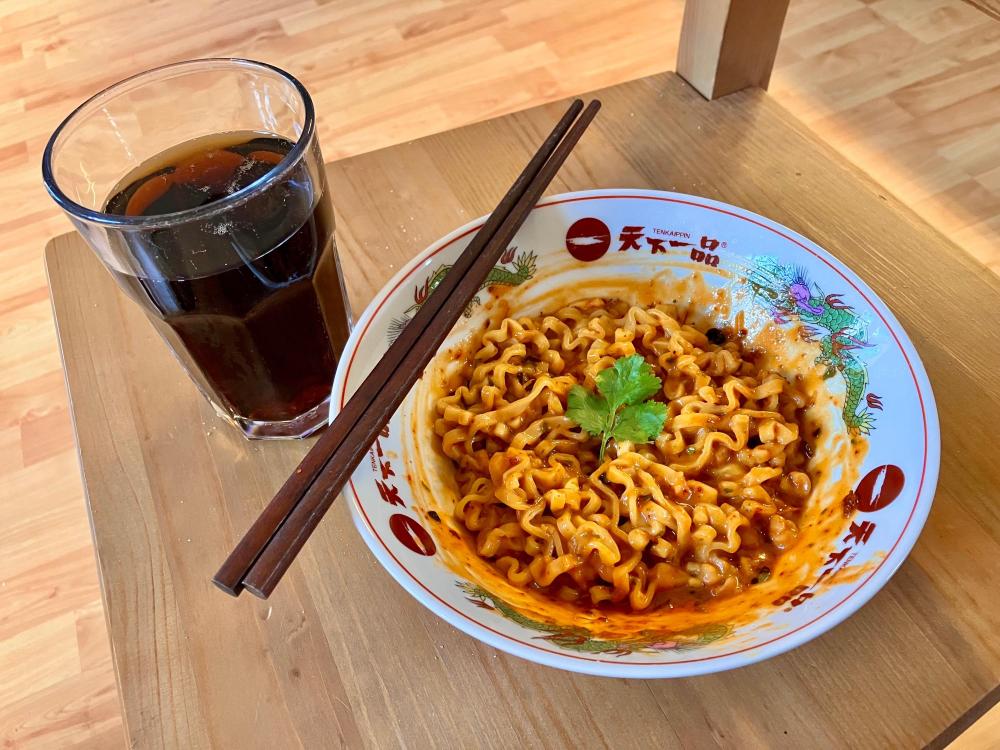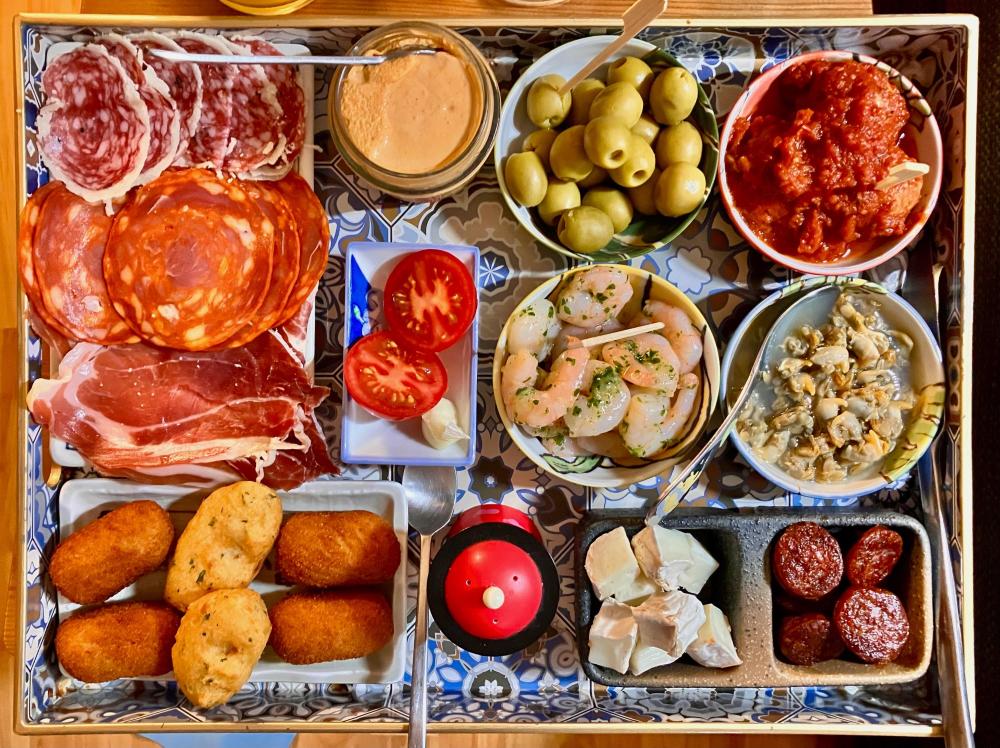-
Posts
4,388 -
Joined
-
Last visited
Content Type
Profiles
Forums
Store
Help Articles
Everything posted by Duvel
-
That‘s French pain d‘épice, and I made it from this recipe … It freezes well.
-
From a German perspective: you want to make an oversized Knödel … 300 g of stale bread, chopped up coarsly. Cubed would be great, but any hazelnut-sized pieces will do. (Optional) 100 g bacon cubes 100 g onion 50 g butter 250 mL milk Fry onions (& bacon) in butter until golden. Add milk. Pour the hot mixture over the stale bread pieces. Let it soaked covered for 30 min, mixing ones with your hands. Add 3 eggs, whisked 1 Tbs of parsley Salt & pepper & nutmeg to taste Let the mixture sit for 1h, then put into a buttered loaf pan and cover with aluminum foil tightly. Bake in a preheated convection oven at 180oC for about 30 min … Cool down, slice it up and enjoy 🙏
-
For Christmas, we are alternating between our families in Germany and in Spain. This year we will be in Spain, so we „preponed“ our German Christmas gathering with my parents and my sisters family to this weekend. My fathers as well a little ones birthday was just the week before, so we had a couple of celebrations together. As a added benefit we met at my parents in the North and had some icy nights & mornings to get into Christmas mood … I made classic holiday fare. Spice bread with whole foie gras … A chestnut „cappuccino“, made from roasted chestnuts, cream, five spice and topped with milk foam … Duck two ways: breast, dry cured and SV for 4h @ 54oC, then seared. Just perfect and served with a tart cherry sauce. Legs, also presalted two days in advance and SV 36h @ 70oC with thyme, butter, quatre épices and finished under the broiler. Classic dark duck sauce. Red cabbage, lingonberry jam and homemade dumplings from raw potatoes. In the heat of the battle, only little one made a picture of the mains … There was pear schnapps as dessert for the men, any other (solid) options were declined due to being completely pigged (ducked ?!) out … No complaints 😎
-
I don’t get it … You separate the content from the can before eating ?! How old fashioned … Think extra fibre 😎
-
@TdeV No, of course not … I had the nachos as dinner, and the puttanesca as midnight snack. And I didn’t even exceed my calorie limit 😎
-
And then … I watched some food shows. Including „Tucci in Italy“. Just the Tuscany episode, but maybe the Bulleit part in the vanilla coke acted up … I made some spaghetti puttanesca. Olives, capers, real sardines in lemon, fish sauce, olive oil, looots of garlic and tomatoes. Barillas bronze-cut spaghetti and looots of pecorino romano. Didn’t fit to Tuscany, but to my mood. Plenty of ripasso … Still no complaints 😝
-
With little one on a sleep-over and DW at a birthday party I was far too lazy to cook. So I raided the shelves and threw together some loaded nachos, plus dips. And enjoyed with a vanilla coke (in which strangely some Bulleit bourbon found its way) … No complaints 🤗
-
Not directed to me, but I do blood sausage, thyme & lemon peel … works every time 🤗
-
Rice paper „bagel“, filled with chorizo, egg and onions, topped with everything bagel mix and baked in the airfryer …
-
That looks pretty much perfect 🙏
-
Not sure whether this is a bad idea or - after the possible consumption of certain substances - the best thing ever …
-
I’ve visited Munich plenty of times and have been to all the major brewery outlets, with one exception: the Schneider Weisse brewery, focusing on wheat beer in all its glory … So, this was the day ! They have seven different wheat beer on tap (and some more bottled) … The beer house also specializes in variety meats, which was just up my alley. See those numbers behind the dishes ? That’s the wheat beer pairing they suggest. Don’t worry - we tested all seven options (plus a bottle) anyway … First some starters … I chose the braised heart in a mustard cream sauce … My friend took the boiled skirt steak with fresh horseradish, which was super tender … After sampling the tabs I had the sweet and malty Eisbock … simply excellent 🤗 After finishing it was still early and we headed out for the Pschorr, a solid choice for Helles from a wooden barrel … And tuning in the nose-to-tail theme from earlier I got some roasted marrow bones with a healthy side of beef tartare … There was some Schnapps afterwards and some beer somewhere on the way back to hotel, but my recollection is a bit fuzzy. Credit card statement also refers to an ice cream, but hey … No complaints - it was a very fun evening 🥳
-
-
How about SV them for 4-6h @54 oC, then searing them hard as you would ..? I’d assume you’s be happy with the outcome, regardless of minor quality compromises you had to accept concerning the raw material …
-
Don’t you hate it when they skimp on the bread ..?!
-
Since lunch was on the light side, a welcome early dinner came in a typical German autumn fashion at Augutinerkeller … Seasonal menu (for @rotuts) … We opted for the venison “medailons”, which were too thin, but quite tasty and tender. Served with hazelnut Spätzle, an idea I need to replicate at home. Much better was the classic roast duck, which is always on the menu and never disappoints. All chased by the Willi Wutz, made from pear schnapps (Williams), pear juice and a ball of pickled pear (hiding in the cloudy goodness). No complaints and a pretty good sleep afterwards, too 🤗
-
Stopover in Munich … of course including a visit to the Hofbräuhaus. Wanted something from their seasonal menu for lunch, but was still too full from the breakfast sausages … Luckily, they had something “light & liquid” 🥳 Good times !
- 551 replies
-
- 10
-

-

-
Most likely they were off to begin with. Yes, trotter do have a certain smell, but soaking (in salted water) and blanching has always given me a product to work with. Try maybe a proven recipe with oroper seasoning next time, maybe with a fresh batch. I’d highly recommend Fergus Hendersons trotter gear (a somewhat 1:1 copy of the recipe can be found at Serious Eats). Good luck !
-
Breakfast of lazy champions, Sunday “hangover”* edition … Couple of extras … Spicy 🌶️ ___ * of course I wasn’t hung over. But my former self, that occasionally was, would have enjoyed this tremendously, too …
-
Pica pica (the Catalan version of tapas) … Everything from the fridge/freezer/cans, so just some deep frying and heating up to do: Jamon, chorizo, longaniza with cheese (bread not pictured), croquetes (jamon, chicken, salted cod), salmon pâtè, olives, meatballs in tomato sauce, shrimps with garlic & parsley, berberechos (cockles), goat cheese, fried chorizo. Enjoyed with the classic Blackbeards Ghost and a glass of red … No complaints 🤗
-
This is what I do as well - usually for 30 min. I got this from a ChefSteps tutorial and somehow it got stuck (mainly because it’s easy and gives good results) …
-
I agree. Plenty of fat, plenty of connective tissue - same success factors as for a good braise. Temperature renders connective tissue into gelatin, and tightens muscle fibers. The equilibrium between both determines your final product. Tenderness can be achieved at any temperature depending on time - and the question of covering the braise ultimately affects the liquid part more than the solids …
-
Yeah … How do you explain the surprisingly successful pressure cooker stews ?!
-
It does not. Beside the marginal effect of evaporation, the pot and its content is in equilibrium with the oven environment. No build up. It will not magically heat up above the boiling point of water. The volume above the liquid may have a different temperature, as the saturation of steam will depend on how much you let escape. But that’s not your point. The chart given by Kenji is worthless without the external temperature. It’s all about the rate of evaporation.



